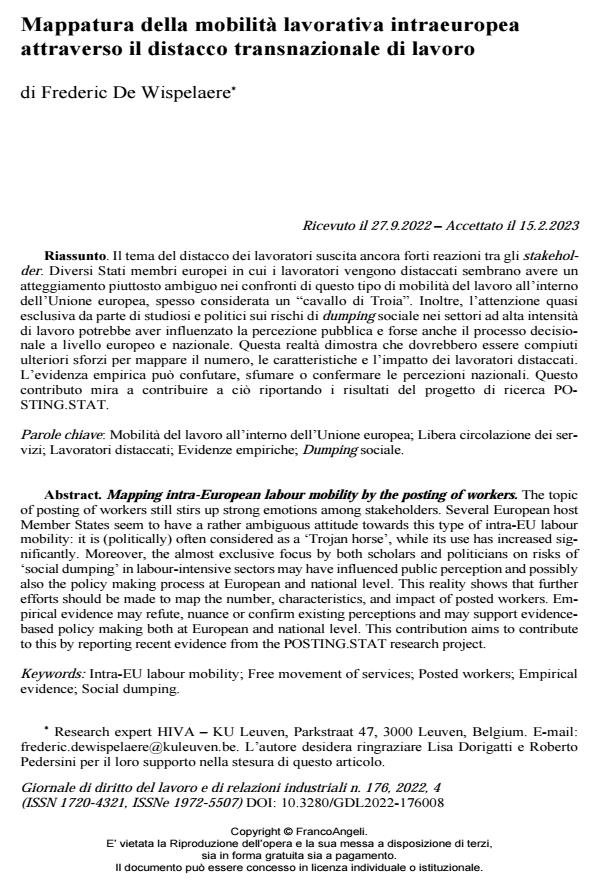Mapping intra-European labour mobility by the posting of workers
Journal title GIORNALE DI DIRITTO DEL LAVORO E DI RELAZIONI INDUSTRIALI
Author/s Frederic De Wispelaere
Publishing Year 2023 Issue 2022/176
Language Italian Pages 21 P. 667-687 File size 287 KB
DOI 10.3280/GDL2022-176008
DOI is like a bar code for intellectual property: to have more infomation
click here
Below, you can see the article first page
If you want to buy this article in PDF format, you can do it, following the instructions to buy download credits

FrancoAngeli is member of Publishers International Linking Association, Inc (PILA), a not-for-profit association which run the CrossRef service enabling links to and from online scholarly content.
The topic of posting of workers still stirs up strong emotions among stakeholders. Several European host Member States seem to have a rather ambiguous attitude towards this type of intra-EU labour mobility: it is (politically) often considered as a ‘Trojan horse’, while its use has increased significantly. Moreover, the almost exclusive focus by both scholars and politi-cians on risks of ‘social dumping’ in labour-intensive sectors may have influenced public per-ception and possibly also the policy making process at European and national level. This reality shows that further efforts should be made to map the number, characteristics, and impact of posted workers. Empirical evidence may refute, nuance or confirm existing perceptions and may support evidence-based policy making both at European and national level. This contribu-tion aims to contribute to this by reporting recent evidence from the POSTING.STAT research project.
Keywords: Intra-EU labour mobility; Free movement of services; Posted workers; Empirical evidence; Social dumping.
Frederic De Wispelaere, Mappatura della mobilità lavorativa intraeuropea attraverso il distacco transnazionale di lavoro in "GIORNALE DI DIRITTO DEL LAVORO E DI RELAZIONI INDUSTRIALI " 176/2022, pp 667-687, DOI: 10.3280/GDL2022-176008